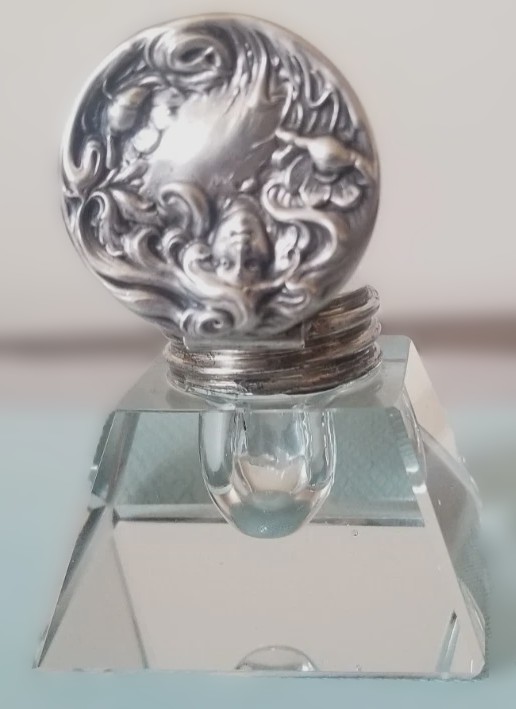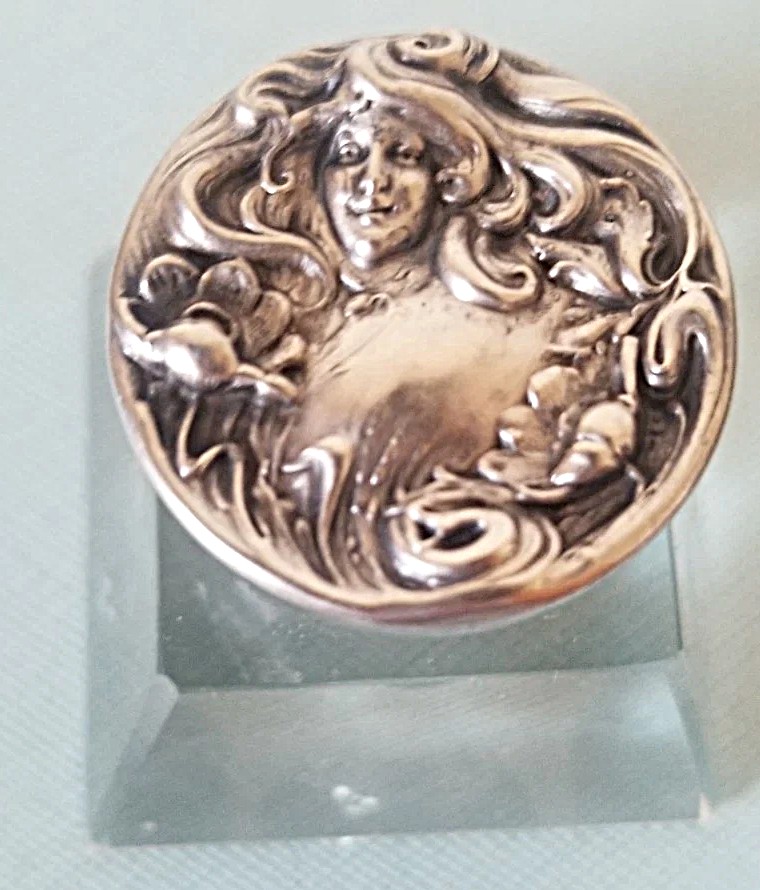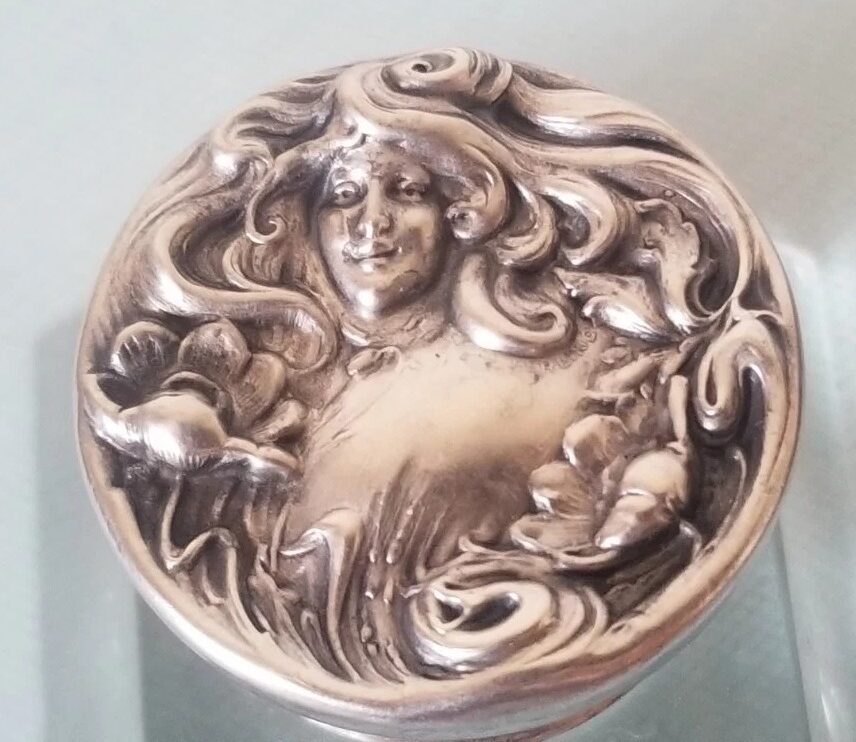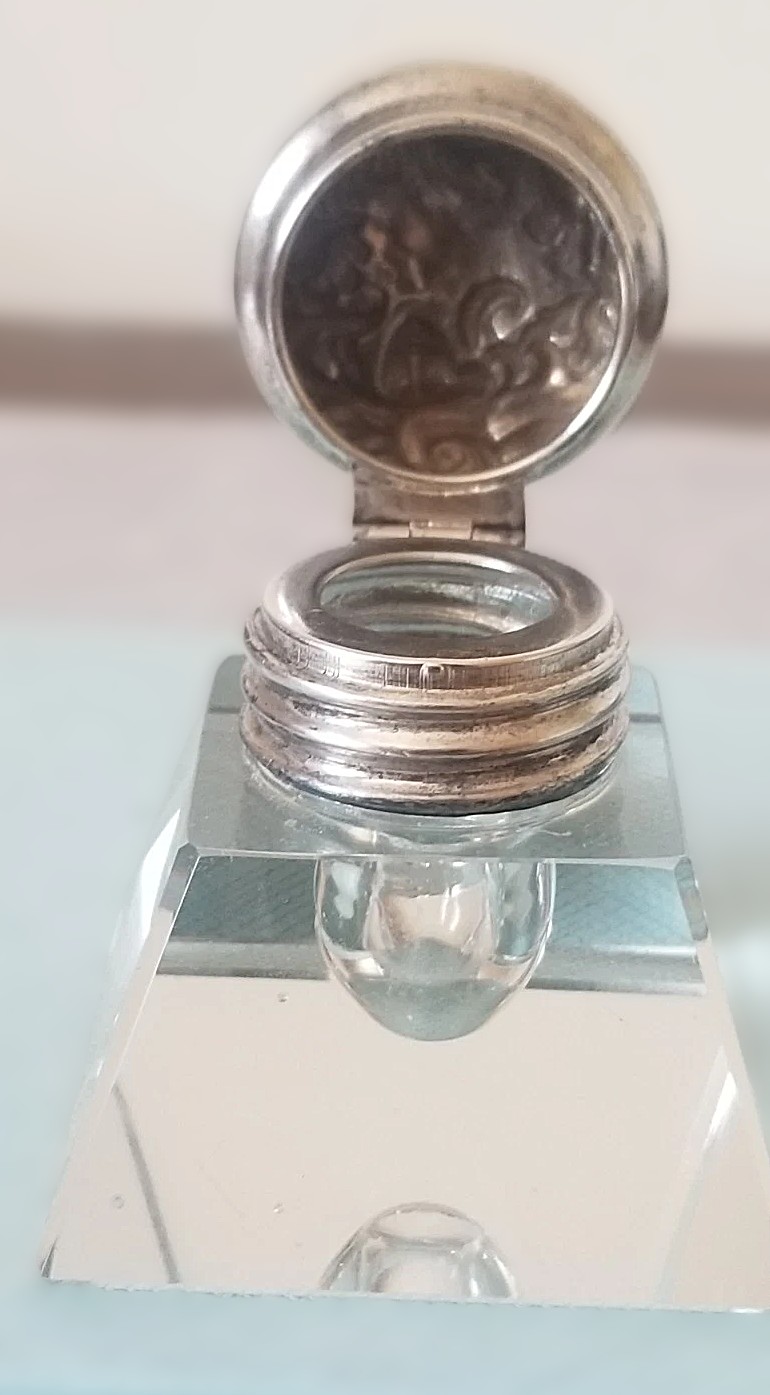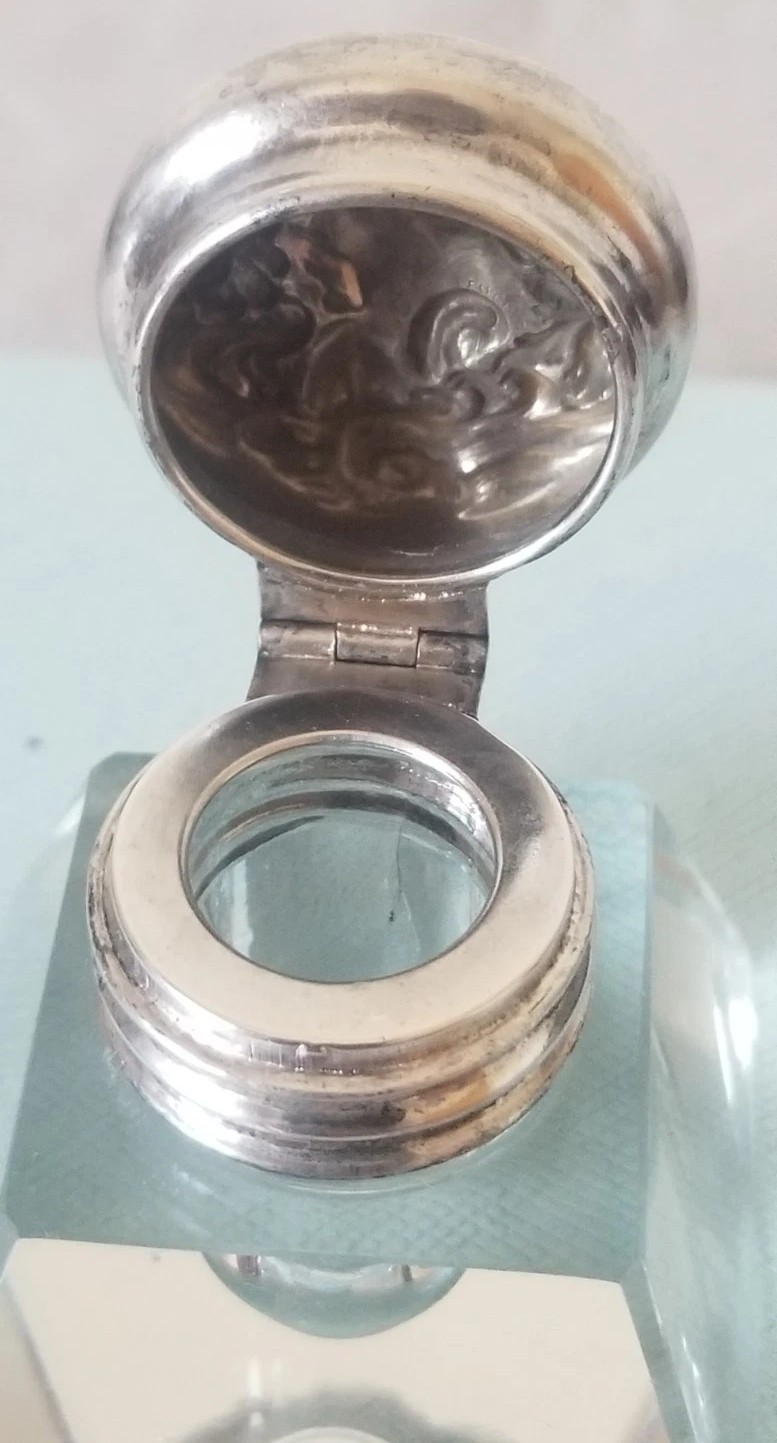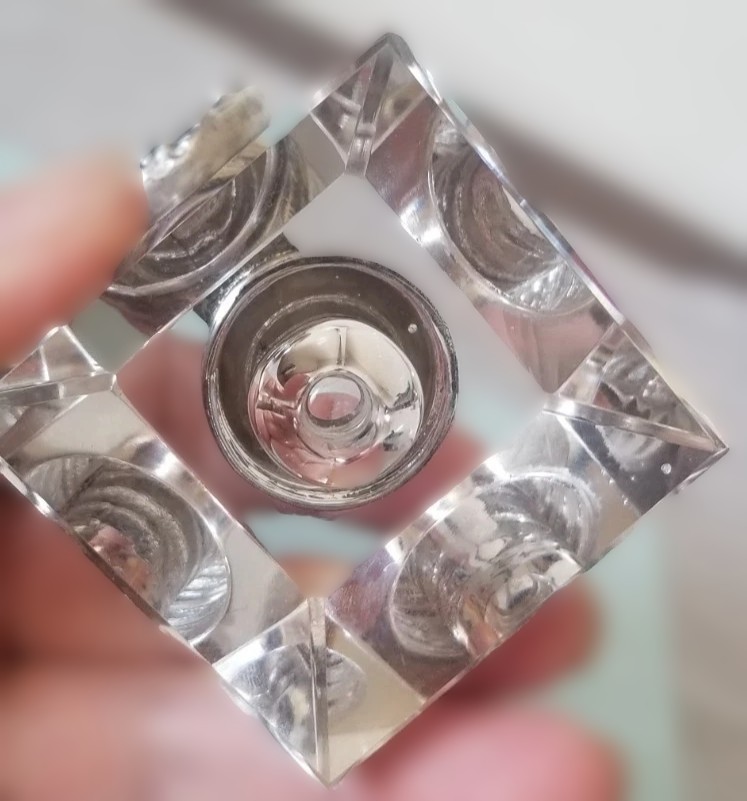
Cut Glass Inkwell with Silver Repoussé Lid
| Categories | Art Nouveau |
| Material | Glass, Silver |
| Markings | Unmarked |
| Manufacturer | Undetermined |
| Origin | Undetermined |
| Date or Era | circa 1900 |
This is a pyramid-shaped inkwell, made of glass, with a distinct silver lid. The base of the inkwell is in the form of a square-based pyramid. The hinged lid is made of silver and features a repoussé design of a female face. The repoussé technique involves hammering the metal from the reverse side to create a raised, three-dimensional design on the front. The woman’s face is depicted with flowing, stylized hair and a serene expression.
Style and Time Period
This inkwell is a textbook example of the Art Nouveau style.
- Art Nouveau Characteristics: The style flourished from roughly 1890 to 1910 and is defined by its use of long, sinuous, and organic lines. It often draws inspiration from nature, depicting flowers, vines, and, in this case, a human form with flowing hair that mimics the curves of a plant. The repoussé woman’s face with its dreamy, elongated features and swirling hair is a very common motif of this period, and a hallmark of Art Nouveau’s design aesthetic.
- Pyramid Shape: While the lid is the clearest indicator of the style, the pyramid shape of the glass body is also noteworthy. The late 19th and early 20th centuries saw a revival of interest in Egyptian and ancient themes, which often influenced decorative arts. This “Egyptian Revival” style sometimes merged with Art Nouveau, leading to pieces that combined the period’s love of organic lines with more geometric, ancient forms.
- Repoussé Technique: The use of the repoussé technique on metal to create such an intricate, sculptural design is also very characteristic of the period, as it allowed for a high degree of artistic expression and craftsmanship that was valued in the movement.
Conclusion on Age: Based on the strong Art Nouveau characteristics, particularly the style of the female face and hair on the lid, this piece can be confidently dated to the late 19th century to the early 20th century, specifically between 1890 and 1910.
Sold for $87 in August 2025
Content disclaimer. The information posted is the owner’s best knowledge and may not have been vetted by the SOIC. We welcome comments, corrections, and additions, working to make our website information comprehensive and accurate.
Join the Society of Inkwell Collectors (SOIC) – it’s free!
Founded in 1981 as a non-profit organization,
we are documenting inkwells (and accessories).
We’re here to help and inform!

